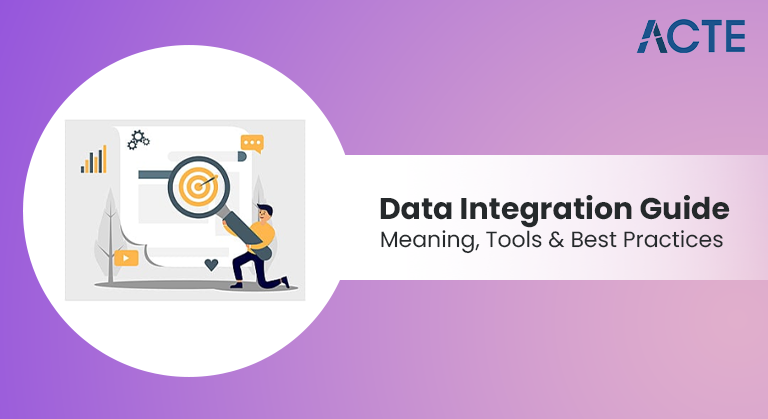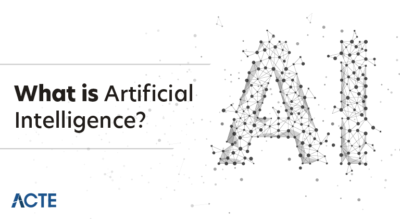
- Introduction – Defining Data Integration
- Why Data Integration Matters in Modern Business
- Key Components of Data Integration
- Types of Data Integration
- Data Integration Architectures
- Popular Data Integration Tools and Platforms
- Challenges in Data Integration
- Data Quality and Governance in Integration
- Use Cases Across Industries
- Best Practices and Implementation Tips
- Conclusion
Introduction – Defining Data Integration
Data integration is the process of combining, synchronizing, and transforming data from disparate sources into a unified, consistent, and accessible format for analysis, reporting, and decision-making. It involves extracting data from multiple systems such as relational databases, APIs, cloud storage, and even IoT devices, cleansing and normalizing that data, and then loading it into target repositories like data warehouses, data lakes, or virtual views (Alation). Data Science Training covers this end-to-end pipeline teaching learners how to integrate diverse data sources, apply transformation logic, and optimize storage strategies for scalable analytics. The ultimate aim is to create a single source of truth that supports enterprises in operating from a shared, trusted dataset.
Why Data Integration Matters in Modern Business
In today’s data-driven world, many organizations struggle with scattered information across different systems and departments. Data integration addresses this problem and offers several key benefits. First, it supports better decision-making by providing a single dataset. This reduces confusion and speeds up insights. Automating data consolidation also improves operational efficiency. Teams can save time and lower manual errors. Data integration enhances customer experience by creating a complete view of customers, allowing for personalized services that build loyalty. To understand the foundational technologies driving these outcomes, Essential Concepts of Big Data & Hadoop offers a comprehensive guide to distributed storage, parallel processing, and scalable data architecture. It also promotes collaboration within the organization by breaking down data silos, which improves cooperation among teams. Finally, having centralized data allows for growth, making it easier for organizations to add new platforms or services as they expand. Overall, data integration is crucial for strategies driven by insights. It forms the foundation of modern business intelligence and operational flexibility.
Interested in Obtaining Your Data Science Certificate? View The Data Science Online Training Offered By ACTE Right Now!
Key Components of Data Integration
Components of Data Integration implementation typically include the following stages: data ingestion, transformation, enrichment, storage, and access. Each stage plays a vital role in ensuring that data flows seamlessly across systems and delivers actionable insights. To understand how these stages drive business impact, How Big Data Can Help You explores practical strategies for leveraging data integration to boost efficiency, enhance decision-making, and unlock growth opportunities.
- Source Identification: Catalog and connect to diverse data sources: ERP, CRM, APIs, IoT feeds, files, etc. (Denodo, Wikipedia, Qlik).
- Extraction: Pull raw data using connectors or API queries.
- Transformation: Cleanse, deduplicate, normalize, and enrich data.
- Loading: Load into target systems such as warehouses (ETL) or data lakes (ELT).
- Synchronization: Ensure freshness via batch jobs or streaming updates.
- Governance & Metadata Management: Track lineage, enforce policies, and safeguard data.
- Access for Analysis: Make the integrated data accessible for reporting, BI, and analytics (Denodo, Qlik).
Components of Data Integration create repeatable, transparent, and scalable data pipelines.
To Explore Data Science in Depth, Check Out Our Comprehensive Data Science Online Training To Gain Insights From Our Experts!
Types of Data Integration
Data integration can be implemented through multiple approaches depending on business needs: from batch processing and real-time streaming to virtualization and API-based methods. To choose the right strategy and build scalable solutions, How to Become a Big Data Analyst outlines the essential skills, tools, and frameworks needed to transform raw data into actionable insights across diverse business environments.

- Manual Integration: Ad hoc, spreadsheet-based consolidation. Useful for small-scale or one-off tasks but not scalable.
- Middleware / Application Integration (EAI): Uses a middleware layer to connect operational systems in real-time.
- ETL (Extract‑Transform‑Load): Extracts data, measures and enriches it in a staging area, then loads into a central warehouse (NetSuite).
- ELT (Extract‑Load‑Transform): Loads data into a centralized system (e.g., data lake) before transformation (Domo).
- Streaming / Real‑Time Integration: Incremental updates using change data capture (CDC), message queues, or streaming platforms (Qlik).
- Data Virtualization / Federation: Creates real-time virtual views without physically moving data (Denodo).
Each method addresses different performance, consistency, latency, and complexity trade-offs.
Data Integration Architectures
Major integration architecture styles include batch processing, real-time streaming, data virtualization, and API-led connectivity. Each style serves unique business needs, from latency-sensitive applications to scalable analytics platforms. To explore how these architectures power global platforms, How Facebook is Using Big Data reveals how advanced data pipelines, machine learning models, and behavioral analytics drive personalization, engagement, and operational efficiency at scale.
- Centralized (Data Warehouse): Consolidates data from multiple sources into a single store (NetSuite, Wikipedia).
- Federated / Virtualization: Provides a unified interface over distributed sources using views.
- Hybrid: Combines approaches structured data in a warehouse, unstructured via virtualization or lakes.
Choosing an architecture depends on data types, business needs, and scalability demands.
Gain Your Master’s Certification in Data Science Training by Enrolling in Our Data Science Master Program Training Course Now!
Popular Data Integration Tools and Platforms
When it comes to data integration tools, many tools are available to meet different needs. Open-source options like Apache NiFi allow for efficient flow-based automation. Talend Open Studio provides visual ETL features and has strong community support. Pentaho Data Integration (Kettle) offers a user-friendly interface that supports big data environments. For businesses that require strong solutions, platforms like Microsoft SSIS, Oracle ODI, Informatica PowerCenter, and IBM DataStage are packed with features and great for large, regulated environments. Data Science Training introduces these enterprise-grade tools helping learners understand their architecture, optimize ETL workflows, and implement robust data integration strategies in complex business settings. In the cloud realm, tools like AWS Glue, Fivetran, Airbyte, and Stitch provide managed connectors for cloud-based ETL and ELT processes. Matillion and SnapLogic also allow for visual data pipelines with flexible connectors, making them useful tools for modern data workflows. Data integration tools can handle a wide variety of data formats, workflows, and governance needs. This helps organizations manage their data effectively.
Are You Preparing for Data Science Jobs? Check Out ACTE’s Data Science Interview Questions and Answers to Boost Your Preparation!
Challenges in Data Integration
Implementing data integration has several challenges that organizations must face. First, data silos can cause inconsistencies and duplications, making the integration process harder. In addition, data quality issues, like missing or incorrect entries, can reduce trust in the system.

Managing the complexity of schemas and mappings is another challenge, as organizations need to adjust to changing schemas through transformations. To tackle these challenges effectively, Skills Needed to Learn Hadoop outlines the technical competencies required to handle schema evolution, ensure data integrity, and build resilient data pipelines in dynamic environments. Scalability can also be a worry, especially when handling large volumes or frequent updates, which can stress the pipelines. Moreover, security and compliance with regulations such as GDPR and HIPAA need careful attention, including proper encryption measures. Finally, many organizations deal with skill gaps and budget limitations, as complex integrations often require specialized knowledge and licenses. To overcome these challenges, it’s important to plan carefully, use automated testing, and keep monitoring the integration process consistently.
Data Quality and Governance in Integration
Effective integration isn’t limited to data movement it also includes governance, metadata management, and policy enforcement to ensure compliance and trust. To master these multidimensional responsibilities, How to Become a Big Data Hadoop Architect provides a strategic roadmap for designing secure, scalable architectures that align with enterprise data governance frameworks and operational goals.
- Validation: Ensuring data meets business rules during transformation.
- Lineage Tracking: Maintaining metadata about data origin and transformations.
- Security Controls: Access restrictions, encryption, masking for sensitive data.
- Monitoring: Alerting on integration failures, data drift, or schema changes.
Governance ensures integrated data is accurate, trustworthy, and compliant.
Use Cases Across Industries
Data integration powers innovation in numerous sectors:
- Financial Services: Real-time fraud detection through combined transactional, account, and risk data.
- Retail & e-Commerce: Unified customer view across online/offline channels drives personalization.
- Healthcare: Patient records from multiple EMRs support better diagnosis and care.
- Telecommunications: Aggregating call data and service records informs network quality and billing.
- Supply Chain: Integrating logistics, inventory, and partner systems for end-to-end visibility (e.g., Cleo-Effective Data alliance) (IT Pro).
- Manufacturing: IoT sensor data combined with ERP and maintenance logs improves predictive maintenance.
These examples highlight integration’s strategic impact across business domains.
Best Practices and Implementation Tips
To build an effective integration framework, organizations must align data sources, transformation logic, governance policies, and access controls into a unified architecture. Learning from industry leaders can accelerate this process. Top Influencers in Big Data share insights on best practices, emerging trends, and proven strategies that help teams architect scalable, secure, and future-ready data ecosystems.
- Define clear objectives: Know which data is needed, how fresh it should be, and who consumes it.
- Start small with MVD (Minimum Viable Data): Begin with a pilot that demonstrates value quickly.
- Automate transformations: Use standards and shared mappings to avoid redundancy.
- Ensure robust metadata and documentation: Enable transparency and maintainability.
- Implement continuous monitoring and alerts: Detect issues early and respond quickly.
- Design for extensibility: Build pipelines that can scale with data volume and source additions.
- Govern with policies: Apply role-based access, encryption, and lineage tracking from day one.
- Maintain data quality: Automate cleansing and validation during integration.
- Support both batch and streaming: Match integration mode to business need.
- Invest in training: Equip teams with skills in data modeling, metadata management, and pipeline development.
By embedding these practices, you create resilient, reliable, and business-aligned data workflows.
Conclusion
Data integration is much more than a technical activity, it’s a strategic enabler of modern business. It transforms disparate data into actionable intelligence while bridging organizational silos, enhancing collaboration, and enabling faster, smarter decision-making. By combining robust integration architecture curries adaptations such as ETL, ELT, streaming, and virtualization with strong governance, data quality, and automation, organizations can unlock the full potential of their data assets. Data Science Training equips professionals to master these integration patterns bridging technical execution with strategic oversight to drive scalable, high-impact data solutions. As AI-powered tools, cloud platforms, and real-time pipelines grow, the possibilities for innovation only expand. Implement data integration thoughtfully, starting small but thinking big, and you’ll build the foundation for trustworthy analytics, operational agility, and sustainable growth.


